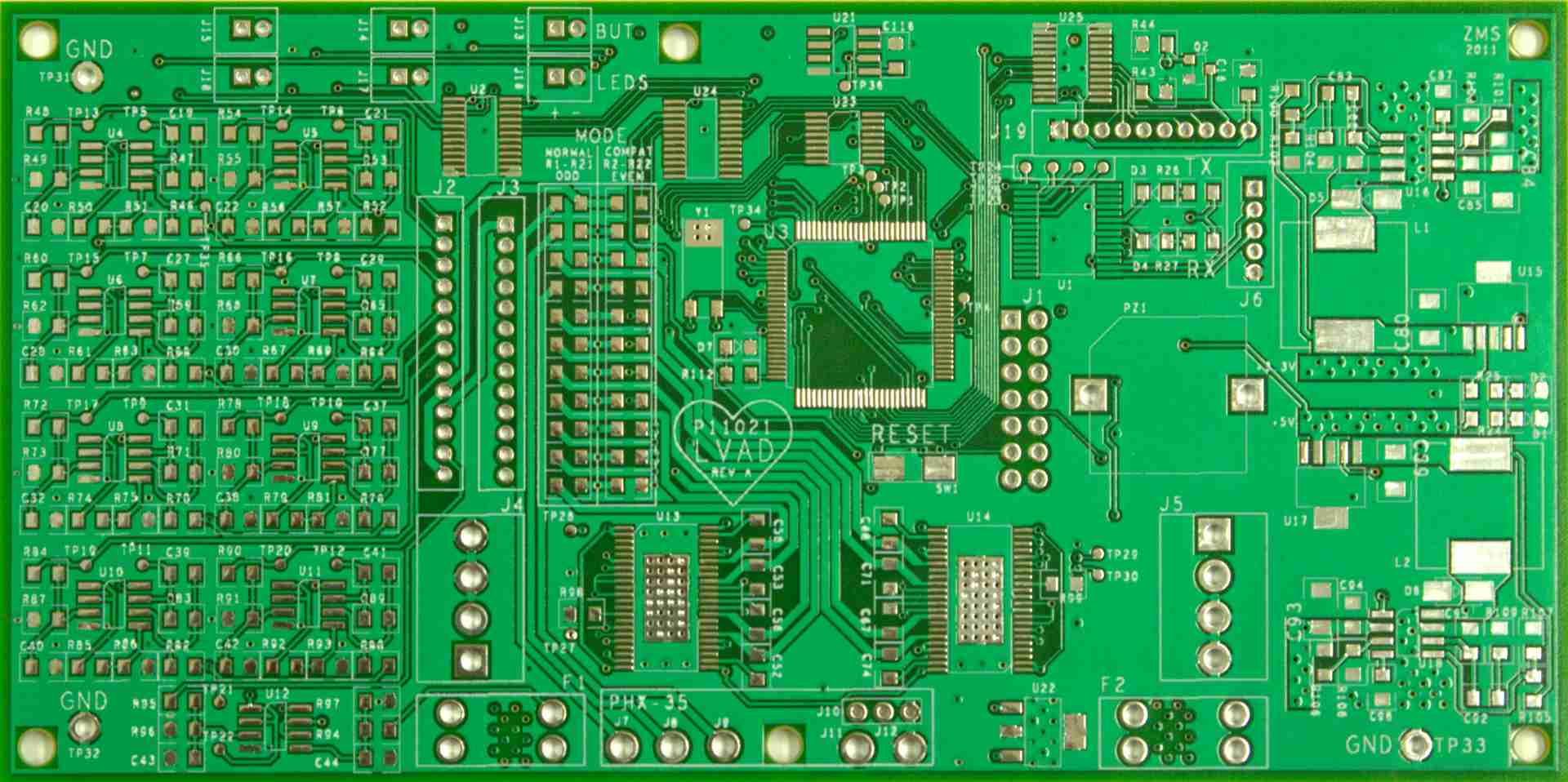Printed circuit boards (PCBs) serve as the foundation for almost every electronic device, providing the mechanical structure and electrical connections between components. While PCBs may contain a rainbow of colors for markings and components, the base color of the bare board itself usually tends to be some shade of green.
This distinct green color is nearly ubiquitous with PCBs and often helps identify their presence in electronic products. But why exactly are circuit boards made green in the first place? The reasons provide an enlightening look into the materials, manufacturing processes and functionality of PCBs.
This article explores the various factors that contribute to the signature green shade of most PCBs. We’ll examine the role of the board substrate, copper plating, solder mask coatings and legends in determining final color. Along the way we’ll gain helpful insights into PCB construction that the simple question “why are PCBs green?” reveals.
PCB Substrate Material
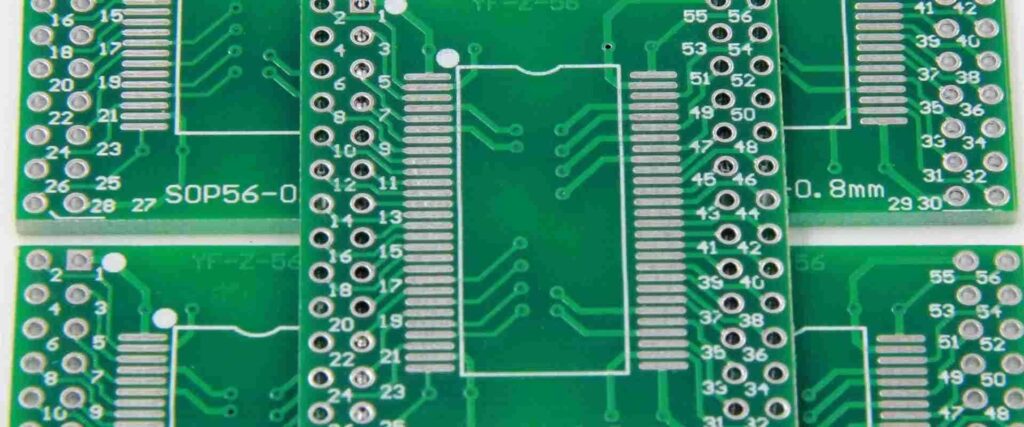
The core material that makes up the PCB provides the foundation for the board’s ultimate color. The substrate typically consists of woven fiberglass cloth bonded together with epoxy resin. The most common type of PCB substrate is FR-4 fiberglass, which consists of woven fiberglass cloth impregnated with flame resistant epoxy resin.
The fiberglass cloth is initially white in color. However the epoxy resin used to impregnate the fiberglass and bond it into a rigid laminated sheet is naturally brownish in color. So the raw FR-4 substrate starts out with this brownish tint due to the epoxy resin matrix. Higher quality PCBs may use transparent epoxy blends that avoid adding color.
Here is a table showing some typical base colors of common PCB substrate materials:
| Substrate | Description | Base Color |
|---|---|---|
| FR-4 | Flame resistant woven fiberglass with epoxy | Brownish |
| CEM-1 | Cotton paper and epoxy | Yellowish brown |
| Rogers RO4003 | Woven glass and ceramic-filled PTFE | Opaque brown |
| Arlon 85N | Woven fiberglass and polyimide | Off-white/transparent |
| Getek | Woven fiberglass and PPO resin | Translucent brown |
So the substrate itself contributes an initial non-green brownish or translucent tone based on the resin system used. This provides the canvas that the remaining PCB processing transforms into the familiar green color.
Copper Plating
The next step in PCB fabrication is plating the surfaces of the substrate with a thin layer of copper foil. This copper cladding forms the conductive layer that the traces and pads are etched from.
The copper foil is rolled to an extremely thin 0.5 to 2 oz thickness (0.0007” to 0.0028”) and bonded to the board substrate. This thin copper layer appears reddish-brown in color, not yet the green we expect from PCBs.
So the copper cladding deposited onto the substrate begins shifting the board color in the redder direction. But we still need additional steps to achieve the iconic green shade.
Solder Mask Coating
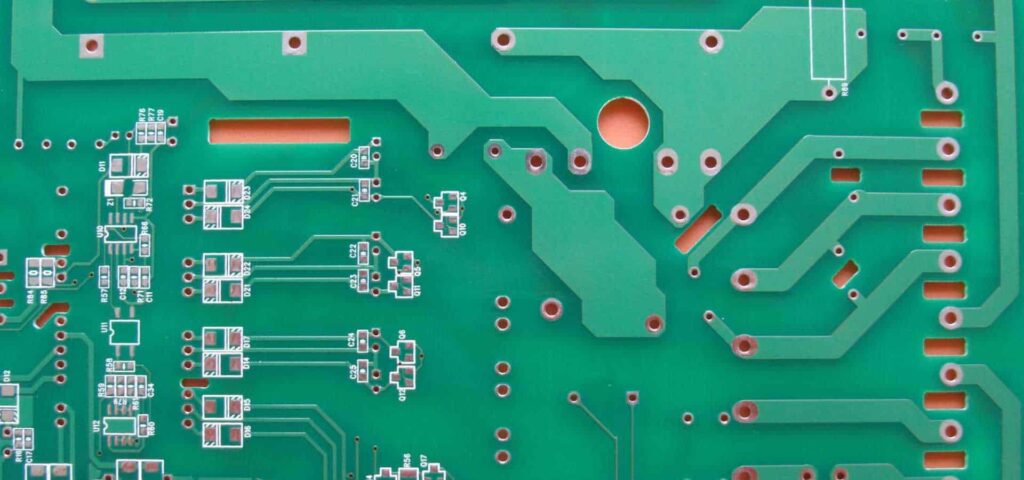
The solder mask is a key component that finally gives PCBs their green color. The solder mask is a lacquer-like insulating coating that is painted or screened onto the PCB surface after etching but before component assembly.
The solder mask serves several important functions:
- Protecting the copper traces from oxidation and environmental damage
- Preventing solder bridges between closely spaced traces
- Providing electrical insulation between conductors
- Improving chemical resistance and part cleansability
But in addition to these critical roles, the solder mask also determines the final surface color of the board. Most solder masks consist of green epoxy materials, resulting in application of an overall green coating to the PCB.
The traditional green color was initially chosen since it provides good contrast with the copper pads and traces on red-brown boards. This aids inspection and enhances legibility of the board.
While green remains the most popular, solder mask ink is available in various colors. Red, blue, yellow, black, and clear masks are sometimes used for specialized designs or improved aesthetics. But standard green solder mask remains the typical choice to give PCBs their pervasive green hue.
Silkscreen Legends
The final finish on a PCB is application of the silkscreen or legend. This paints markings like reference designators, polarity indicators, board outlines, and identifiers onto the solder mask for easy recognition of components and tracings.
The silkscreen ink uses epoxy-based paint, most commonly white or yellow to stand out boldly against the underlying green solder mask. While legends help improve board marking legibility, they do not contribute significantly to overall board color itself.
With the silkscreen applied atop the solder mask, the PCB adopts its final and recognizable color scheme.
Why Green for PCBs?
We’ve seen how the combination of substrate, copper layers, solder mask, and legend inks results in the green PCBs we are familiar with. But why was the color green originally chosen for the solder mask in the first place? There are several advantageous properties of the color green:
- Contrast – Green solder masks were first developed to provide visual contrast from the copper features on boards. This enhanced inspectability and component legibility versus natural or brown masks.
- Visibility – The color green is located at the midpoint of the visible light spectrum. So it provides good visibility under various lighting conditions.
- Aesthetics – Green was perceived as a more aesthetically pleasing electronics color versus browns, andcreated signature board recognition.
- Availability – Green epoxy-based solder mask inks were readily available from established masking processes in other industries like metal decoration and finishing.
So the combination of enhanced legibility, pleasing aesthetics, and process availability led PCB fabrication toward standardization on green solder masking and associated board color.
Advantages of Green Boards
Beyond the historical precedence, using green solder mask continues to provide benefits:
- Allows easy identification of PCB substrates versus other materials
- Provides good contrast between traces and background for inspection
- Blends into the natural green color of brass component leads
- Maximal visual accessibility for red-green color blindness deficient users
- Consistent color for designers, assemblers, and maintenance for easy PCB recognition
- Maintains a professional, clean look versus other colors like brown or black
As surface-mount assembly became prevalent, some designers switched to more neutral solder mask colors. But maximizing inspectability and aesthetics continue to favor standard green for many PCBs.
Alternatives to Green
While green dominates, as we’ve seen PCBs may utilize other solder mask colors for specialized designs such as:
- Blue – Blends with blue annotative markings and ENIG gold plating
- Red – Creates high visibility boards for critical systems
- Yellow – Increases sensitivity for red-green color weakness
- Black – Suites dark enclosures and improves contrast with gold traces
- White – Provides neutral background for colored legends
- Clear – Allows viewing substrate for unique aesthetic effects
However, these alternate colors sacrifice some of the benefits of traditional green. They also often increase cost, lead time, and minimum order quantities.
Here is a comparison table of common solder mask colors used on PCBs:
| Color | Benefits | Drawbacks |
|---|---|---|
| Green | High trace contrast<br>Standard availability | Clashes with some component colors |
| Blue | Complements blue annotations | Lower contrast with traces |
| Red | Alert visibility<br>Color blindness aid | Can cause eye strain |
| Yellow | Also aids color blindness | Stains and discolors over time |
| Black | Stylish, blends with enclosures | Reduces trace contrast |
| White | Neutral legend background | Dirties easily |
Other Factors Affecting Color
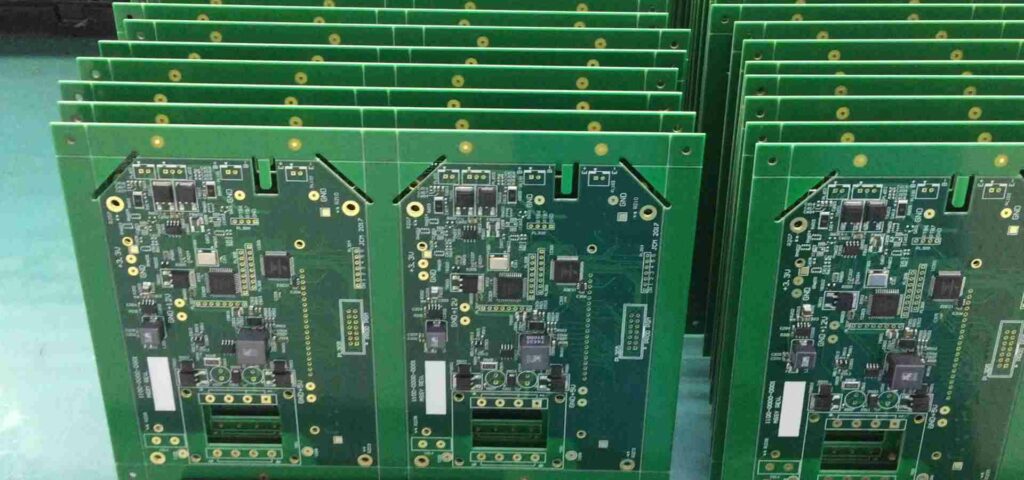
Some additional PCB fabrication factors also subtly influence the board shade:
Copper Weight – Heavier copper has a more reddish tint while thinner foils appear brown. So 1 or 2 oz copper versus 0.5 oz shifts boards toward red.
Plating – Boards with ENIG or immersion gold plating get a yellow-orange cast from the gold layer interacting with the light.
Finish – Matte finishes scatter more light, reducing color saturation versus glossy finishes.
PCB Brand – Different manufacturer processes influence color consistency batch to batch.
Component Density – Dense boards with more conductors reflect more red-brown light from traces and pads.
LED Color – Illumination during inspection also shifts perceived board color.
So both PCB design and fabrication processes impact the final green color rendered. But the solder mask remains the primary factor responsible for making circuit boards green.
Conclusion
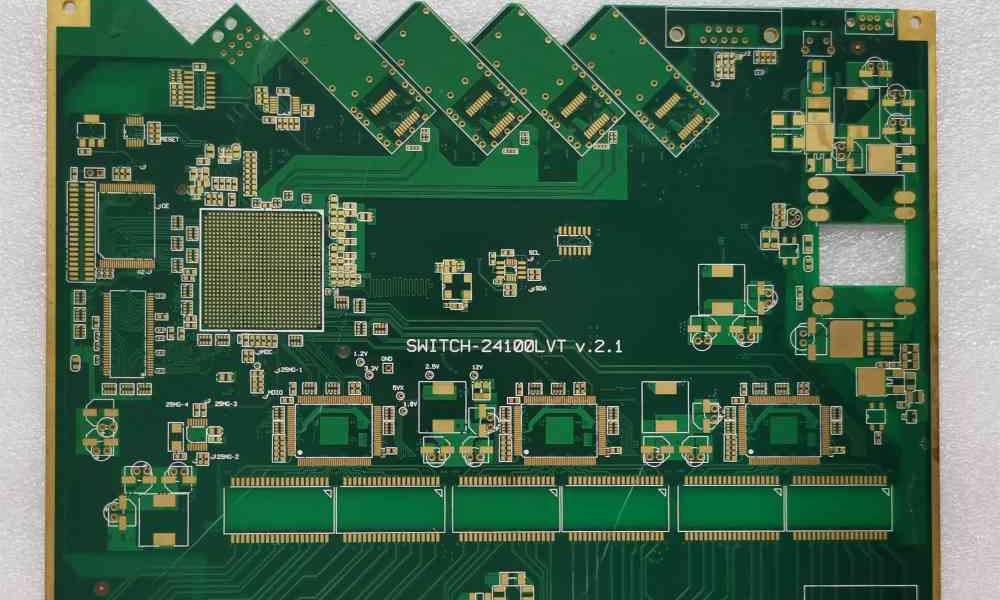
In conclusion, PCBs gain their iconic green color primarily from the green epoxy solder mask lacquer coated onto their surface. The solder mask protects the copper traces etched onto the fiberglass board substrate. While alternate solder mask colors are sometimes used, standard green remains the most popular and provides good contrast and aesthetics. The combination of the brownish board substrate, copper conductors, and green solder mask come together to create the distinctive green of printed circuit boards that’s so familiar across electronics.
FAQs
Does bare FR-4 fiberglass have any green color?
No, the raw FR-4 substrate is a translucent brownish color from the epoxy resin used to bond the woven fiberglass. Green color only appears after applying solder mask.
Does green solder mask affect circuit performance?
Solder mask color has no significant electrical impact. Parameters like dielectric constant are largely unaffected. The mask just changes visible color, not base functionality.
Can you tell board material just from color?
While color can indicate likely materials, exceptions occur. Color alone should not be relied upon to identify board substrates or fabrication. physically examining the PCB is required for definitive determination.
Are leads and pads also dyed green?
No, only the solder mask itself is colored. Copper conductors, component leads, and PCB laminates retain their natural metallic and dielectric colors.
Are any electronics made with naturally green boards?
Not traditionally – the green comes from solder mask. Some novel attempts use naturally green chlorella algae cellulose for the board substrate itself, but this is still very experimental.
